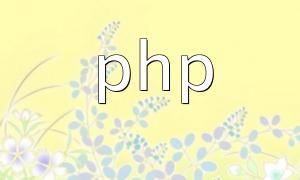Real-time communication has become an essential feature in modern internet applications. Users can interact instantly through voice and video, greatly enhancing communication efficiency. This article explains how to implement voice messaging and video calling support in real-time chat using PHP, helping developers build effective communication systems.
WebRTC is widely used in audio-video communication for its low-latency audio capture capabilities. The following example demonstrates how to request user permission and capture audio via the navigator object:
// Request audio via navigator object
navigator.mediaDevices.getUserMedia({ audio: true, video: false })
.then(function(stream) {
// Successfully obtained audio stream, proceed with processing
})
.catch(function(err) {
console.log(err);
});
This code requests user audio permission and obtains the audio stream, with error handling if the request fails.
Once the audio stream is captured, it needs to be transmitted to the server in real time. WebSocket provides an efficient solution for real-time data transmission. Here is an example:
// Create WebSocket object
var socket = new WebSocket('ws://localhost:8080');
// Send audio stream to server
socket.send(stream);
This code establishes a WebSocket connection and sends the audio data stream to the server using the send method.
Video capture is similar to audio. The following code requests user permission and obtains a video stream:
// Request video stream via navigator object
navigator.mediaDevices.getUserMedia({ video: true, audio: false })
.then(function(stream) {
// Successfully obtained video stream, proceed with processing
})
.catch(function(err) {
console.log(err);
});
This code requests video permission and handles success or failure accordingly.
After capturing the video stream, it can be transmitted with low latency via WebSocket as follows:
// Create WebSocket object
var socket = new WebSocket('ws://localhost:8080');
// Send video stream to server
socket.send(stream);
This code creates a WebSocket connection and transmits the video stream in real time using the send method.
This article introduced how to leverage PHP together with WebRTC and WebSocket technologies to implement voice messaging and video calling features in real-time chat applications. By combining audio-video capture and transmission techniques, developers can build highly interactive and smooth communication apps, improving user satisfaction and application value.









